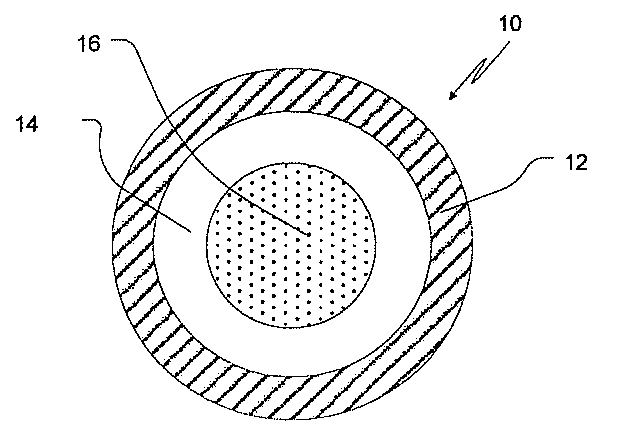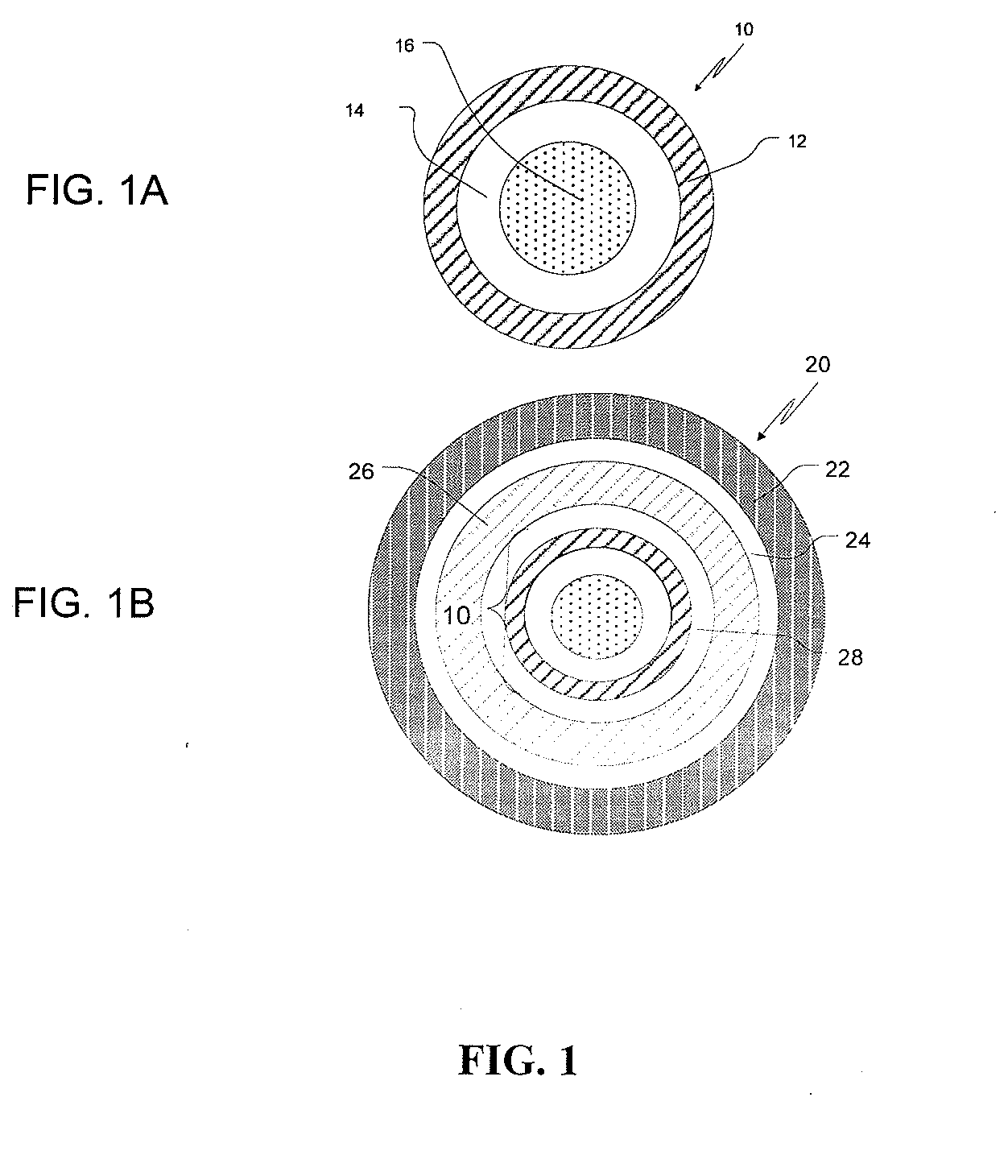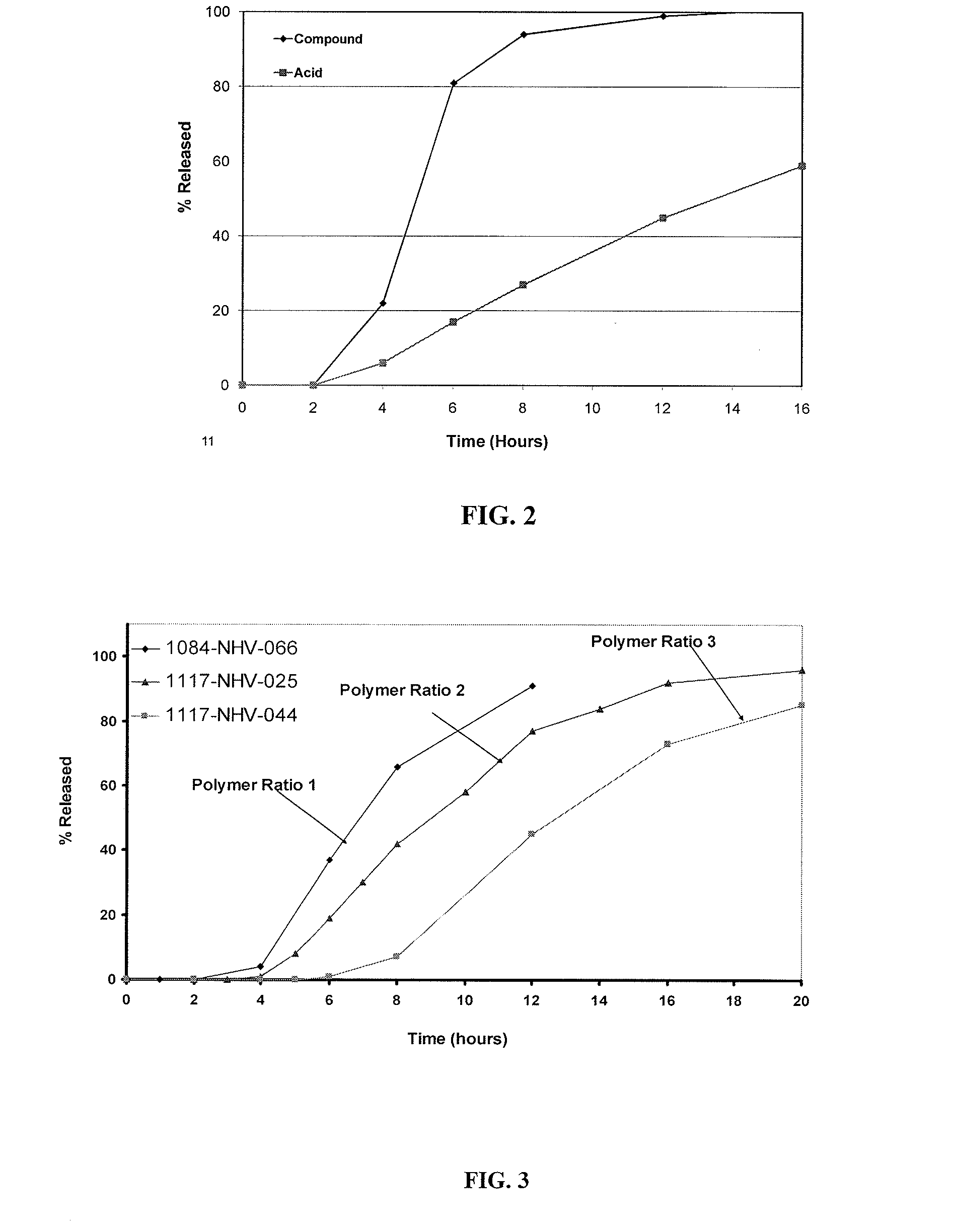Methods of Treating PDNV and PONV with Extended Release Ondansetron Compositions
a technology of ondansetron and composition, which is applied in the direction of drug compositions, biocides, microcapsules, etc., can solve the problems of prolonging the time, less control of nausea and vomiting, and complex risk factors of ponv and pdnv
- Summary
- Abstract
- Description
- Claims
- Application Information
AI Technical Summary
Benefits of technology
Problems solved by technology
Method used
Image
Examples
example 1
[0077]1.A SR-Coated Fumaric Acid Crystals: 40-80 mesh fumaric acid crystals (3750 g) were charged into a Glatt GPCG 5 fluid-bed coater equipped with a 9″ bottom spray Wurster insert, 10″ column length and 16 mm tubing. The fumaric acid crystals were coated with a solution (6% solids) of 250 g of ethylcellulose (EC-10: Ethocel Premium 10 cps) and 166.7 g of polyethylene glycol (PEG 400) at an EC-10 / PEG 400 ratio of 60 / 40, dissolved in 98 / 2 acetone / water (6528.3 g), for a coating weight of up to 10% by weight. The processing conditions were as follows: atomization air pressure: 2.0 bar; nozzle diameter: 1.00 mm; bottom distribution plate: B with 15 gauge 100 mesh screen; spray / shake interval: 30 s / 3 s; product temperature maintained at 35±1° C.; inlet air volume: 155-175 cubic feet per minute (cfm) and a spray rate increasing from about 8 to 30 g / min.
[0078]Fumaric acid crystals were also coated as described above using different ratios of ethylcellulose and PEG. More specifically, fum...
example 2
[0083]2.A Fumaric Acid-Containing Cores: Hydroxypropyl cellulose (Klucel LF, 53.6 g) was slowly added to 90 / 10 190 proof alcohol / water at 4% solids, with rigorous stirring until dissolved, and then fumaric acid (482.1 g) was slowly added and stirred until dissolved. A Glatt GPCG 5 equipped with a 9″ bottom spray Wurster insert, 10″partition column was charged with 3750 g of 25-30 mesh sugar spheres. The sugar spheres were layered with the fumaric acid solution while maintaining the product temperature at about 33-35° C. and at a spray rate of 8-60 mL / min. The acid cores were dried in the Glatt unit for 10 min to drive off residual solvent / moisture and sieved through 40-80 mesh screens.
[0084]2.B SR-coated Fumaric Acid-Containing Cores: Following the procedures of Example 1.A, fumaric acid cores (3750 g) from Example 2.A were coated with a solution of EC-10 mixed with either PEG 400 (B.1) at a ratio of 60 / 40 or TEC (B.2) at a ratio of 90 / 10 as the plasticizer, dissolved in 98 / 2 aceton...
example 3
[0088]3.A Ondansetron Hydrochloride RR Beads at a drug load of 10%: Hydroxypropylcellulose (Klucel LF from Aqualon, 33 g) was slowly added to 50 / 50 water / Denatured Alcohol 3C, 190 Proof (2500 g each) while mixing to dissolve. Ondansetron hydrochloride dihydrate (300 g) was slowly added to the above binder solution until the drug was dissolved. 60-80 mesh sugar spheres (2607 g) were coated with the drug solution (5% solids) in a Glatt GPCG 5 to provide a drug content of 10 wt. % (as ondansetron base) under the following conditions: air distribution plate: B with 100 mesh screen; nozzle diameter: 1 mm; partition height: 10″; 9″ bottom spray Wurster insert; product temperature at 36-37° C.; inlet air volume at 60-65 cfm and increasing spray rate from about 20-25 g / min. The resulting drug-layered beads were provided with a protective seal-coat of Pharmacoat 603 (hypromellose 2910; 3 cps) (2% weight gain) to form RR beads. The RR beads were dried in the Glatt unit for 10 min to drive off...
PUM
| Property | Measurement | Unit |
|---|---|---|
| Temperature | aaaaa | aaaaa |
| Time | aaaaa | aaaaa |
| Force | aaaaa | aaaaa |
Abstract
Description
Claims
Application Information
 Login to View More
Login to View More - R&D
- Intellectual Property
- Life Sciences
- Materials
- Tech Scout
- Unparalleled Data Quality
- Higher Quality Content
- 60% Fewer Hallucinations
Browse by: Latest US Patents, China's latest patents, Technical Efficacy Thesaurus, Application Domain, Technology Topic, Popular Technical Reports.
© 2025 PatSnap. All rights reserved.Legal|Privacy policy|Modern Slavery Act Transparency Statement|Sitemap|About US| Contact US: help@patsnap.com



